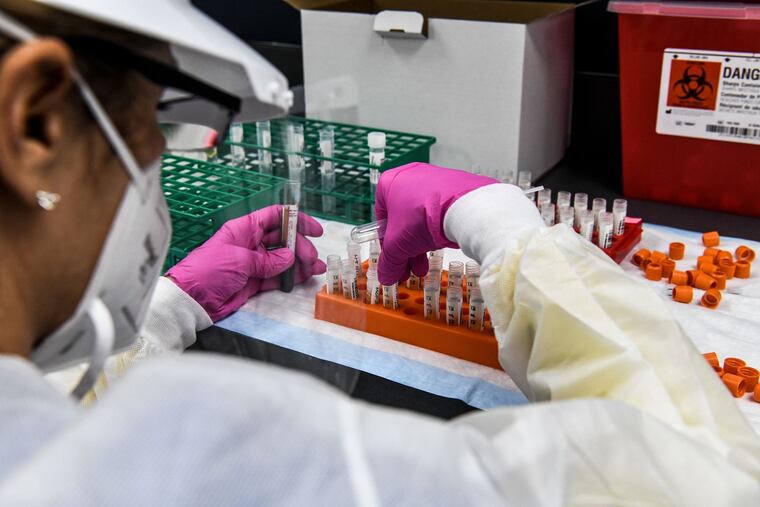Many more children have had COVID-19 than you might think
The CDC's figures come from blood samples that were taken for non-COVID reasons.

With so many people using at-home COVID-19 tests, if they’re testing at all, experts acknowledged long ago that the true number of cases is higher than what is officially reported.
New CDC data suggest that among children, the true number is a lot higher.
The evidence comes from the blood samples of children who had their blood drawn at commercial labs for non-COVID reasons, such as measuring levels of cholesterol or lead. Among 26,725 blood samples collected in May and June, nearly 80% contained a type of antibody that the immune system produces only in response to infection — not in response to the vaccines.
Assuming that percentage holds true for all U.S. children, the CDC estimated that at least 57 million youths had been infected with the coronavirus by the end of June, four times the cumulative total of reported cases at that point. Even that figure could be an underestimate of cases dating to the beginning of the pandemic, as the levels of these telltale antibodies drop to undetectable levels in most people within a year.
The proportion of children with COVID-positive blood samples was slightly lower in Pennsylvania (73.2%), New Jersey (72.5%), and Delaware (75.7%), but still well above official reported totals, said Craig Shapiro, an infectious diseases specialist at Nemours Children’s Health in Delaware.
“The fact that more than 75% of those samples were positive for antibodies does tell us that we’re definitely underestimating the number of children who’ve been infected,” he said.
Comparable data for adults are available only as late as April, but even then, nearly 60% of adult blood samples contained the antibodies that indicate infection.
While some of these infected people may have tested themselves at home and did not report the results, others probably had no idea they were infected and never got tested, Shapiro said. Their immune systems, in many cases bolstered by vaccination or previous infection, may have snuffed out an infection before it caused any symptoms.
“Many people, especially children, are not going to be overtly symptomatic,” he said.
Shapiro cautioned that the results from blood samples are not necessarily representative of all children. He cited one CDC study in which children getting their blood drawn for cholesterol measurement were more likely to test positive for the coronavirus than children getting their blood drawn for other reasons.
But the differences were small, and on the whole, the blood samples paint a clear picture: Reported case totals are missing lots of infections, he said.
The good news is that lately, fewer children are experiencing the constellation of severe COVID symptoms called multisystem inflammatory syndrome, Shapiro said. That’s partly because the omicron variant seems to cause milder disease than its predecessors, and partly because vaccination and past infection have given children a degree of immunity.
But with school already underway in some parts of the country, Shapiro cautioned that vaccination rates are still too low. As of Aug. 17, fewer than one-third of children ages 5 to 11 had gotten both doses of a vaccine, according to the CDC. Among those ages 6 months to 4 years old, fewer than 2% were fully vaccinated.